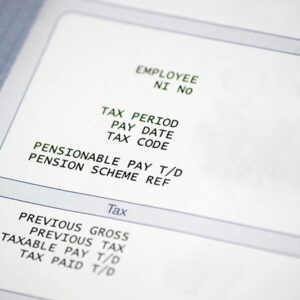A Short Guide to the 25% Tax-Free Pension Lump Sum

This content is for information purposes only and should not be taken as financial advice. Every effort has been made to ensure the information is correct and up-to-date at the time of writing. For personalised and regulated advice regarding your situation, please consult an independent financial adviser here at Smith & Pinching in Norwich, Lowestoft and Eaton. The Financial Conduct Authority does not regulate taxation advice, estate planning or inheritance tax planning.
How should you approach your tax-free pension lump sum? In 2023-24, a UK taxpayer can withdraw up to 25% of the value in their pension(s) – either simultaneously or as multiple lump sums – without an income tax liability. Yet is it a good idea?
Below, we explore this question in more detail – especially in light of the cost of living crisis, which is leading more people to consider “dipping” into their pension to manage their declining spending power. If you want to discuss your financial plan with us, please get in touch to arrange a no-obligation financial consultation:
01603 789966
What is the 25% tax-free lump sum?
In 2023-24, an individual can take up to 25% of their pension pot as a tax-free lump sum when funds are put into drawdown. For instance, if there is £500,000 saved in a member’s pension pot, then up to £125,000 could be taken without paying income tax. However, anything withdrawn above this would be taxed. Drawdown payments are also taxed as income.
Most individuals can start accessing their tax-free lump sum once they reach their Normal Minimum Pension Age (NMPA). Please note that the NMPA is set to rise from 55 to 57 in April 2028. From this point, pension savers aged under 55 will need to wait longer to access their tax-free lump sum compared to previous taxpayers unless their pension plan includes a protected pension age.
Arguments for taking your tax-free lump sum
Certainly, 25% of someone’s pension pot can represent a lot of money. Having this suddenly appear in your account, without income tax, opens up a lot of options. Perhaps you can finally start that extension project on your home, pay off your mortgage or go on a long, well-earned holiday with your partner. If your emergency buffer is low (e.g. you have less than 3-6 months’ worth of living costs saved in easy-access savings), then taking the lump sum from your pension can help you shore up some financial stability.
There can also be tax advantages to taking your lump sum. For instance, by taking the tax-free cash in stages, it is sometimes possible for a basic rate taxpayer to keep themselves out of the higher rate tax band (resulting in more income from a lower total payment).
Reasons to not take the full 25%
The biggest risk when taking the 25% tax-free lump sum is that the individual lowers their future retirement income. Less money is likely to be available to buy an annuity. Income drawdown might not offer the same income, possibly leading a saver to follow investment strategies involving more risk than they are truly comfortable with (to try and attain higher returns). In the worst-case scenario, taking the 25% cash could be a major factor in leading some people to run out of money in retirement.
There is also a market timing risk involved with taking the lump sum in one go. For instance, suppose you take the tax-free cash shortly after a market crash. A year later, the market recovers and your pension rebounds. Had you taken the cash at this point – rather than 12 months earlier – then the 25% would have represented a higher amount.
Things to consider
Taking the tax-free lump sum is a very personal decision and must be considered in light of your unique financial goals and circumstances (ideally under guidance from a financial adviser). For those attracted to the option, taking the money gradually as multiple lump sums can help to mitigate market timing risk and can offer tax-saving opportunities.
Be mindful that moving into drawdown and taking taxable income (i.e. anything other than your tax-free lump sum) can trigger the Money Purchase Annual Allowance (MPAA) rules, which cannot be reversed and typically have far-reaching effects on a wider financial plan. Here, a taxpayer’s annual allowance (for money purchase pension contributions) is reduced from a maximum of £60,000 per year to £10,000 in 2023-24. Therefore, if you (and/or your employer) plan to keep making contributions to your pension after taking an income from it, please note that the amount of tax efficient pension funding you can carry out is likely to be restricted. In addition, your own tax-efficient contributions are limited to 100% of your earnings or £3,600 per annum if more.
Do not forget about your estate plan in this whole matter. In 2023-24, most pension pots can still be passed down to beneficiaries without inheritance tax upon death of the owner. As such, taking your tax-free lump sum could reduce the amount of wealth you eventually pass down to your loved ones.
Conclusion & invitation
If you are interested in discussing your own financial plan or investment strategy with us, please get in touch to arrange a no-commitment financial consultation at our expense:
01603 789966








